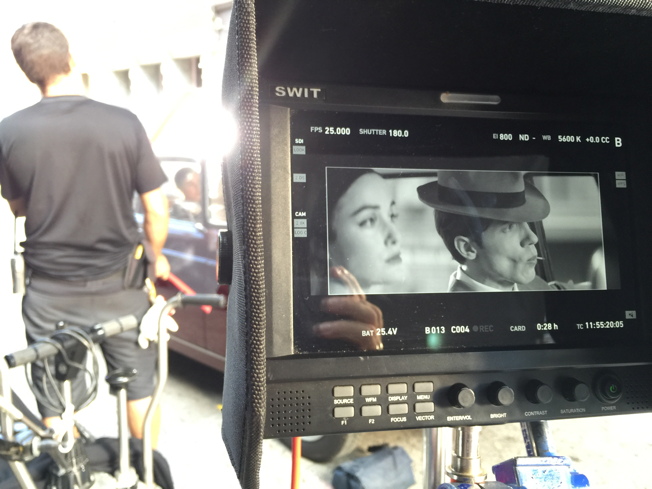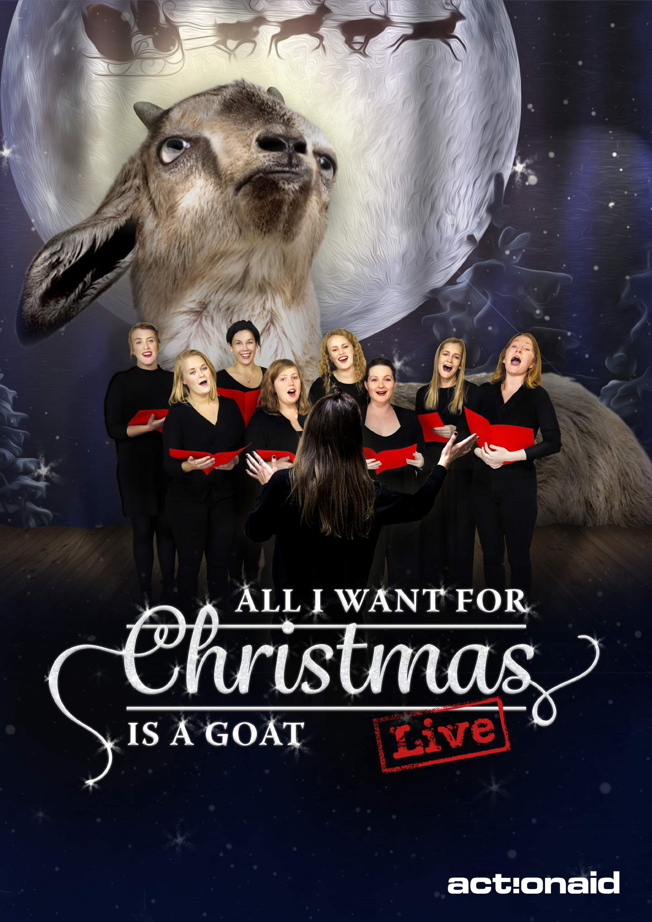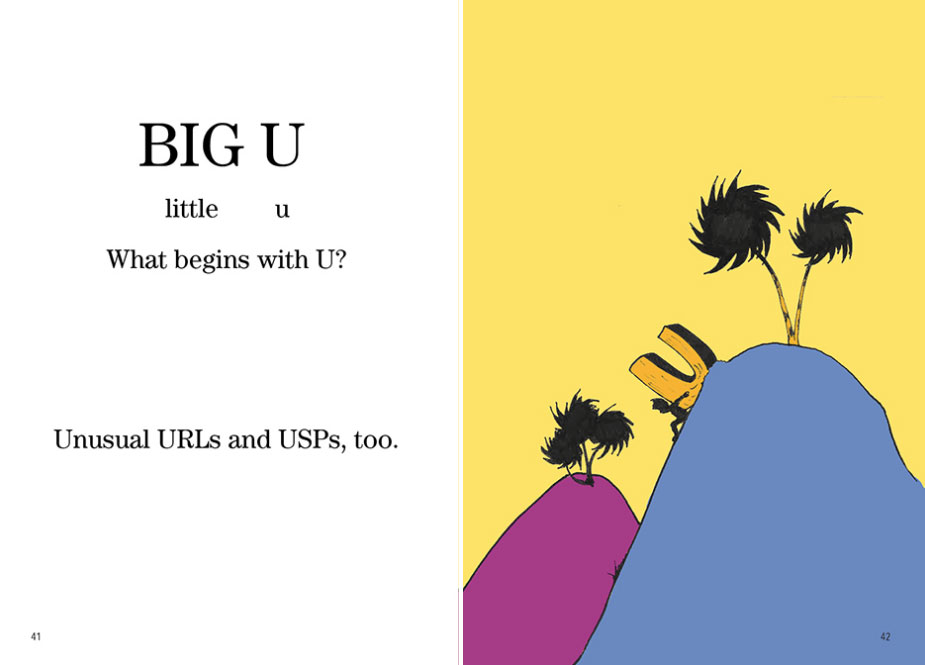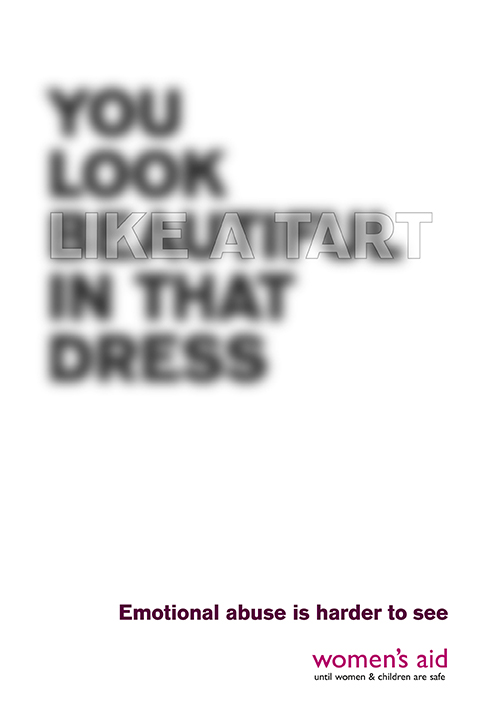![]()
It's the most wonderful time of the year, when agency people push all the client work to the side and try to make a cool, funny, sweet or poignant holiday card.
How did they do? Check out some of the offerings below. And yes, we know we probably forgot your agency's card. So, e-mail it to us and we'll try to update this story a few times before Christmas.
We're adding more cards now. Refresh to see the latest ones:
88 Brand Partners - Regifting 2016
Rather than send clients a card or gift, each team member at 88BP was given $500 to use his or her own unique gifts to in some way do good in the world. Check out this microsite to see the regifting stories of how the 88 team tried to make the world a slightly better place.
![]()
Patrick Scullin - Make Christmas Great Again
While this was not an official agency card, Ames Scullin O'Haire principal Patrick Scullin sent this personal card to clients, friends and family—"a simple analog concept that I hope will be remembered for spreading good cheer," he says.
![]()
![]()
Redsuit Advertising - Rudolph: A Case Study
Rudolph needs a rebranding, and the Redsuit folks are here to help.
teamDigital - Chet the Elf
You know Buddy the Elf. Well, now meet Chet the Elf—a jolly, gift-giving expert who uses Twitter to help people find Elftastic gift ideas. Chet gets his Elfing power from a custom platform that analyzes tweets to automatically provide an unexpected gift idea.
![]()
![]()
![]()
![]()
Team One - Happy Technolidays
This agency had artificial intelligence write a holiday carol.
"We used TensorFlow to create an LSTM (Long Short Term Memory) Neural Network that reads all of the lyrics of 200 years' worth of holiday carols," the agency says. "The network learned the style of how the different carols where written—the context of words, rhymes, line/stanza breaks, etc."
See below for more on how Team One merged the technology of the future with the musical style of the 1800s to create a new kind of carol.
Resource/Ammirati - Your Identi-tee
IBM acquired Resource/Ammirati last January, and the agency makes good use of IBM's Watson in this holiday campaign. Watson analyzes your Facebook or Twitter account and then makes a custom T-shirt design that is the sum of all your amazing traits.
![]()
Interbrand - #IBforEquality
Each year Interbrand challenges its offices across all seven continents to design a creative holiday campaign around a resonant theme. Last year's was peace, in the wake of the attacks on Paris. This year's theme is equality.
"Equality carries so much meaning both stateside and abroad, as human rights continue to face tribulation," the agency says. "We support all interpretations of equality, because demonstrating diversity and embracing our creativity is a celebration of what makes us human."
See what the various Interbrand offices came up with at this link.
GS&F - Merry & Christmas
With its 2016 holiday card, this agency says it "took technology further than ever before, pushing past virtual reality and into the revolutionary space of real reality. We made a card. Out of paper. And ink." Find out how below.
Walrus - Yes, it's another shirt from Walrus
Walrus sends out something people will actually use—a T-shirt. This year's design features a walrus emoticon, which was inspired by the emoticon in co-founder and chief creative officer Deacon Webster's email signature. See the shirt, and the accompanying note, below.
![]()
Alex Goddard, Asa Bradshaw and David Felton - Merry Critmas
This grassroots campaign urges senior creatives to give back this holiday by critiquing a young creative's portfolio for free at merrycritmas.com."People are a little kinder in December" says Goddard. Bradshaw and Felton add: "For undiscovered talent trying to break into advertising, it's the perfect gift. And for established creatives it's an easy way of giving something back. Just half an hour of their time can make a real difference. And you never know who might walk through the door." U.K. agencies Magnafi and Trunk helped bring the campaign to life.
Wunderman - Deck the Halls
Wunderman New York deconstructed the holiday card making process and created an entire deck about it, which it sent to clients. Sami Thessman, the agency's chief creative officer, explains the process in this video.
Planet Propaganda - BlitzenSchticks
Planet Propaganda reached out to Underground Meats, owners of a butcher shop down the street, to create BlitzenSchticks—limited edition, merrily seasoned polish pork sticks. They're 100 percent reindeer free. Proceeds from every package of the holiday BlitzenSchticks sold benefit Luke House community meal program.
![]()
Here is the original post:
AKQA - The Snow Fox
AKQA created a children's story that comes to life by voice. The Snow Fox is a wintry tale of a young child who adventures through the forest with a newfound furry friend in search of his/her mother. As the child reads, the story animates. When a sentence is finished, the story automatically transitions to the next scene. Word by word the story comes to life, bringing an element of magic to bedtime bonding moments between parent and child.
Firstborn - Nick the Game
This digital agency created a remarkable Santa-themed room-scale VR video game. The agency explains: "Santa's on the run, and only you can save him. Step into his boots to become Nick—the hard-boiled badass Claus bent on survival. Battle killer robot elves in this VR tower defense survival game, and try to hold out against the evil hordes to save what's left of Christmas."
![]()
Arnold Worldwide - Virtual Santa
Arnold created a virtual Santa at a storefront in Boston's historic Faneuil Hall. Passersby get into spirited SMS conversations with the screen-based Father Christmas, powered by Havas Cognitive partner IBM Watson and Arnold's own proprietary AI. Santa then programmatically determines whether visitors are naughty or nice and sends his Arnold Elves to gift them accordingly.
DiMassimo Goldstein - Bipartisan Holiday Cards
"In the spirit of togetherness, Bipartisan Holiday Cards offer a fun way to say that yes, we still wish you peace and happiness, despite our disagreements," the agency says. "The bonds of true friendships, after all, should trump our political differences (pun intended.)"
![]()
twofifteenmccann - The Living Holiday Card
Below is a time-lapse video version of twofifteenmccann's live-streamed holiday card—a fun rooftop shout out to its San Francisco neighbors and clients.
White64 - White64 Motors
In a parody of self-driving vehicles, the agency is announcing that it is opening a new division dubbed White64 Motors. Its first client is none other than Santa Claus, for whom the new division has developed a self-driving sleigh. On the website, users also can customize their own driverless sleigh. As the White64 Motors website explains, "We didn't reinvent the wheel. We got rid of it. The JNGL64 autonomous flying sleigh is miles above the competition. When technology finally catches up to imagination, innovation is created."
CP+B - Happy Qualidays
To create the perfect holiday card, CP+B tested multiple holiday card designs to see what would appeal to each and every client. The agency held live focus groups and conducted an online survey, providing both qualitative and quantitative feedback. The resulting card (see the GIF below) directs clients to happyqualidays.com, where they can see the findings, including a highlight video from the focus groups.
![]()
Plan B - Santa's Post-Ride Press Conference
Dogged by rumors and fake news reports, Santa has a meltdown at his post-ride press conference. Check out the highlights below, exclusively on the ELF Network.
22squared - @TheFeedThatFeeds
22squared created the Instagram account @TheFeedThatFeeds, which is a literal feed of food photography, featuring dishes from top chefs and bakers in the Atlanta and Tampa areas, where 22squared has offices. For every like, individuals will be fed by the restaurant tagged in the photo, and the food will be delivered by 22squared employees to a partner food bank or nonprofit organization. The initiative will run through Dec. 31.
![]()
DigitasLBi - Happy Non-Fake News Year
Can you tell which stories from 2016 were real and which were fake? For each person who plays this online game, DigitasLBi will make a donation (up to $5,000 total) to Girls Write Now, a nationally recognized organization that trains the next generation of powerful women in media and journalism.
![]()
Story Worldwide - The Very Important 'Meeting'
Story Worldwide is hosting a four-hour Facebook Live video this Thursday, Dec. 22, from 1 to 5 p.m. that you can add to your calendar—blocking off that time and preventing anyone else from booking a last minute meeting right before the holidays.
Brunner - Santa's Self-Driving Sleigh
For a holiday greeting card suitable for Pittsburgh's tech economy, Brunner produced a three-page article in the holiday issue of fictional magazine Techy. Titled "Inside Santa's Self-Driving Sleigh," it features an interview with the lead engineer elf behind the new, reindeer-less sleigh. The article was produced as traditional three-page print article and is online at techy.brunnerworks.com.
![]()
Anomaly - The 12 Days of Christmas - A Tale of Avian Misery
Phoebe Waller-Bridge narrates this bleakly amusing holiday film from Anomaly London, which imagines the nightmarish scenario of a man who takes "The 12 Days of Christmas" literally—and buys all that crap for his girlfriend.
School of Thought - Project Fruitcake
Check out real reactions as a non-fictional focus group weighs in on three rebranding campaigns for fruitcake. The video link is being sent to clients and friends on gift packages that read, "We wanted to send you a fruitcake but our focus group told us not to." The gifts inside are a "deconstructed" fruitcake, with three boxes containing apricot hearts, cocoa almonds, and citrus & berry fruttini.
SS+K - Happy Holiday Adventure
SS+K is breaking free of the traditional flat holiday card stack by offering 360° virtual reality bobsled rides. The virtual world consists of 3-D polygonal assets that make up a colorful winter wonderland. With the cardboard glasses, users can engage a slow-motion effect at any point throughout the experience to get a better look at the playful world around them. At any point throughout the run, snow will fall if the user shakes their head. There's also a 360-degree YouTube video of the experience.
![]()
Rethink - GingerPong
Check out the world's first gingerbread Ping Pong table!
![]()
Bernstein-Rein - Year of Madness Bracket Challenge
Pick the craziest moment of 2016 through a March Madness-style bracket. The agency will make a donation to the charity whose efforts are an antidote to the craziness occurring in the winning moment.
![]()
Happy Medium - Happy Medium's Favorite Things
The agency's take on its own "Favorite Things" this season.
ABC Creative Group - Santa Rebrand
Kris, the CEO of the world's largest toy manufacturer, came looking for a new image for his company that would engage more millennials. Once ABC got rolling on the rebranding campaign, things got real…
CRISP - The Boy Who Broke Santa's Lap
In 1995, a boy broke Santa. This is his story.
CooperKatz - Twas the Morn' of the Gift Swap
Find out how CooperKatz got ready for its annual gift swap.
Cohn & Wolfe - A 48-Year-Old Picture Puts 2016 In Perspective
Cohn & Wolfe says: "We believe that whether developing a global communications program or volunteering in your own community, there's only one way to accomplish great things: together."
Britton Marketing & Design Group - The ABCs of Advertising
Dr. Seuss' ABC's book, reimagined as the ABC's of Advertising.
http://www.brittonmdg.com/the-britton-blog/marketing-parody-abc-of-advertising-design
![]()
HUSH - TopoTopo
HUSH wanted to send clients a lighthearted puzzle-game gift, but wanted it to feel personal and have a emotional connection to HUSH's employees and design culture. They also wanted to show off their expertise in tech, design, beautiful materials, UX, engagement and interactivity, product manufacturing and interest in data design and 3D printing.
The result is TopoTopo—a web-based tool that allows users to enter any location on Earth and create a 3-D topographical model of that place which can be shared via social, turned into a puzzle, 3-D printed and sent to the user via the hub.
For clients, friends and family, HUSH will custom-create puzzles based on locations near and dear to them, pairing them with heartfelt, often poetic written memories of their connection to those locations.
![]()
MKG - Holiday Spirit
Last Friday, Dec. 16, anyone who tweeted @thisisMKG using the hashtag #MKGHolidaySpirit summoned the "Holiday Spirit" to their office—where the Spirit whipped up a tasty cocktail.
R&R Partners - Bad Gifts for Good
Destroy bad holiday gifts for the good of all mankind. For every terrible and thoughtless gift you destroy on the website, the R&R Partners Foundation will make a donation to charity (Communities In Schools) up to $7,500.
![]()
ab+c Creative Intelligence - Holiday Card by Committee
ab+c created a website where people can view the holiday card, then suggest changes by tweeting @abc_creative with the hashtag #ABCHolidayCard. People can then view the card online, in real time, and watch as someone goes to the computer to make your changes live.
![]()
MullenLowe Group - MLGshakermaker
The MLGshakermaker allows people to create and customize their own virtual snow globe (shaker) scene and send it to friends and family as an e-card with a personalized message.
![]()
a










































































